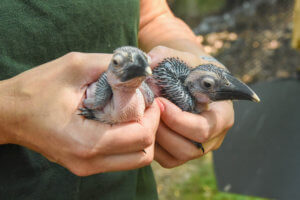
(BALTIMORE, MD) – The Maryland Zoo in Baltimore is pleased to announce that two Von der Decken’s Hornbill (Tockus deckeni) chicks hatched in its African Aviary on July 4th and 7th.
The two-week old chicks won’t be visible for several weeks. That’s because, before they lay their eggs, the male and female Von der Decken’s mud up the entrance to the nest with the female inside, leaving only a small opening through which the male brings food for the female and, once they hatch, her chicks. When the chicks are large enough, the female will break herself out of the nest and both parents mud the entrance to re-seal it so that the female can join the male in bringing food to the chicks.
“We first brought Von der Decken’s to the Maryland Zoo in 2012 and have had success with our breeding pair and the offspring of these striking, highly social birds,” said Jen Kottyan, the Zoo’s Curator of Birds. “They’re easy to spot with hooked beaks and white and black feathers. The female has a black beak while male has a bright orange beak. They are all very agile flyers.”
The Maryland Zoo’s Von der Decken’s can be seen inside the African Aviary along the African Watering Hole Boardwalk. Currently, the aviary is closed to the public as a biosecurity measure against the avian flu. (Avian flu is highly contagious to birds, and can be carried into the exhibit on the bottoms of shoes.) But the nesting box and adult male are easily visible through the aviary netting.
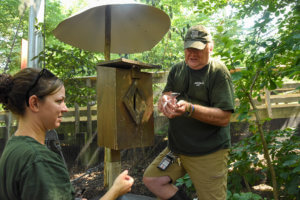
Von der Decken’s hornbill is a small member of the hornbill family named after the German explorer Baron Karl Klaus Von der Decken, who described this bird in his writings about his explorations in Africa.
These birds are found across eastern Africa from central and eastern Tanzania, throughout Kenya, and into southeastern Ethiopia and Somalia. They favor the open bush and scrubby woodlands of dry savanna and arid steppe. In the wild, their diet consists of snails, mice, nestling birds, lizards, tree frogs, seeds, fruit, berries, and insects. At the Zoo they are fed a mixture of meat, fruit, vegetables and bugs.

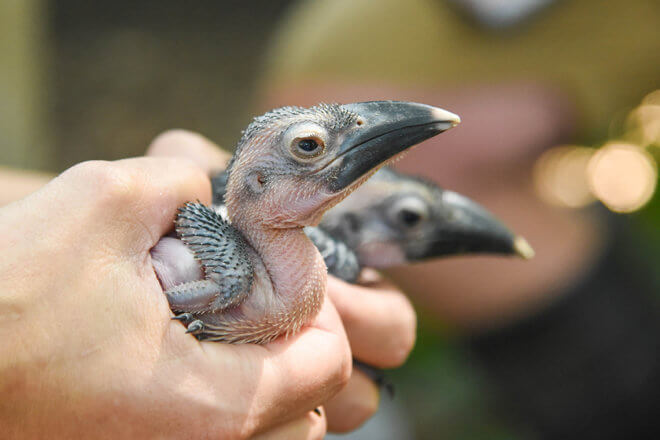
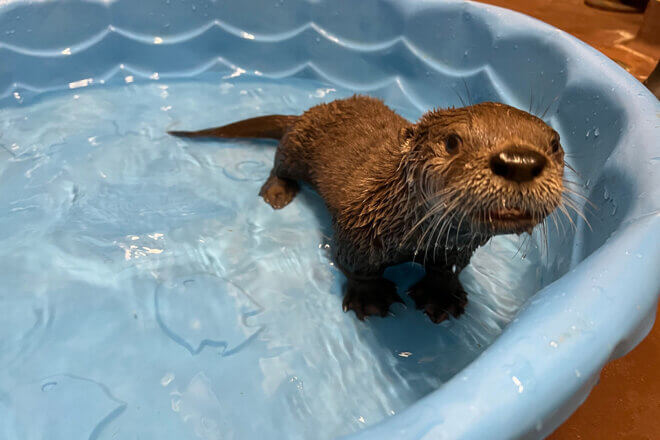
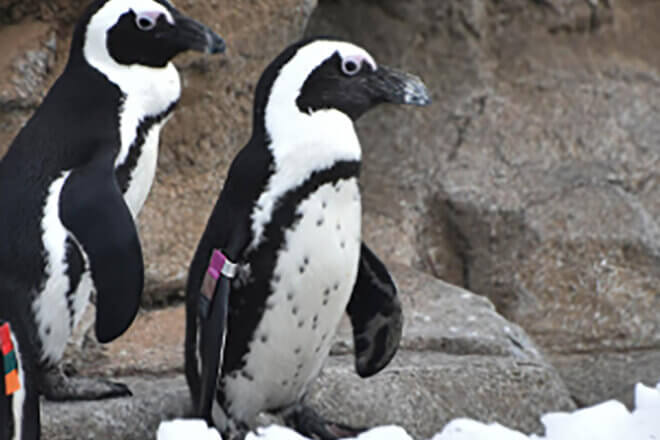
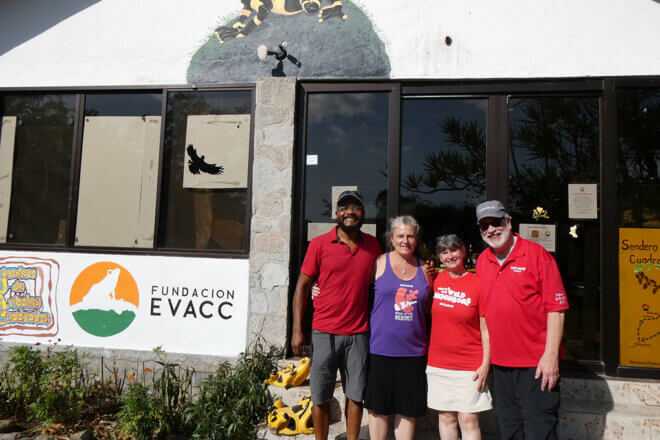

Share this article